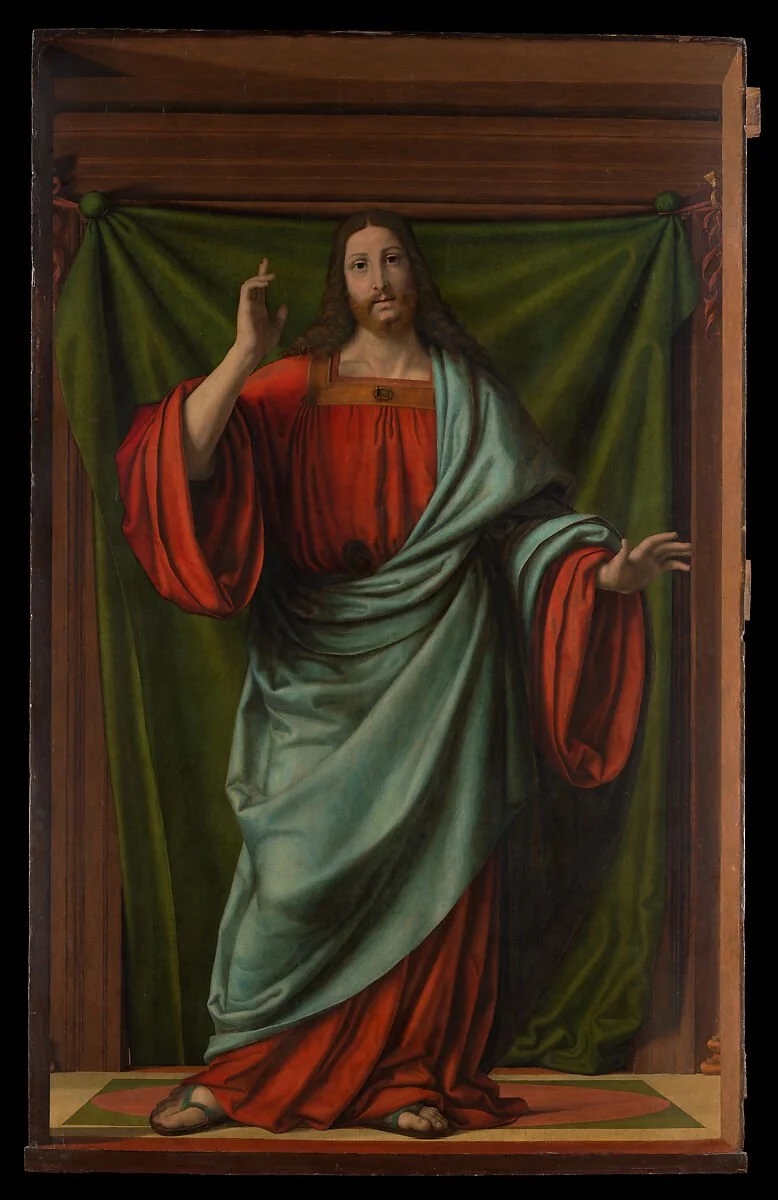G609
Raphael
#9
Raphael #9
Sacred Image and the Viewer
1500: Transition from polyptych to single-scene altarpiece
Christ Blessing. Andrea Solario
ca. 1524
Velouté
Green backdrop shows a tiny gap on lower left.
Saint Roch. Francesco Francia
\ god with triangle halo?
\ mannequin like figures
\ a naked Arabic?
\landscape technique? Clouds on upper right matches the hills on lower right?
** idea: AI that trains to see how artists compose clusters of cloud and hill - Western vs Chinese ways
Crucifixion. Francesco Granacci
\ northern landscape, How u define it?
\ two sun in crux scene - For the movement of sun goes either way when opening the triptych?
\ resurrection scene, a hill looks like a spirit ascending
Raphael, MC enthrone
conservative: elaborately clothes Christ
\ what is the red black symbol?
\ shadow completely cut off the golden pattern: poor technique, poor conservation or something sacred?
\ St Peter finger at a certain page
\ palm leave and female heads tilt the same way
Raphael, Agony
\ Raphael doesn’t paint sky?
On general practice of landscape, green layer then immediately blue layers to show distance. Many are like this.
Coreggio, Four Saints
\ right hands in sync
\ a red bird? In the woods
Brescia, Entomb
\ artist key figure in pushing theological clarity
\ three crosses in the distance like a portrait seen before (project of internal thought)
\ a pointed rock added as device to project rising sunlight
\ on general practice of eye sights, those involved are immersed looking towards their actions; those affected, passively accepting like us the audience, looking directly outside the canvas towards us. (Roman guys are looking at Christ, Virgin and mag look at us)
Ghirlandaio, Nativity
// a visual stimulus for monks’ prayers
\ large hands are purposeful to remind monks to take action—pray, write…?
Candid, Announce
/ again, book is open to a specific page. Artists to show theological clarity or familiarity in their commissions?
Bugiardini, MC Enthrone
/ why so many holes?
Tito, MC E
/ a very different scheme of landscape—warm red
Sarto / Vaga, Holy Family
/ Joseph seems always creep in from another realm and dimension
